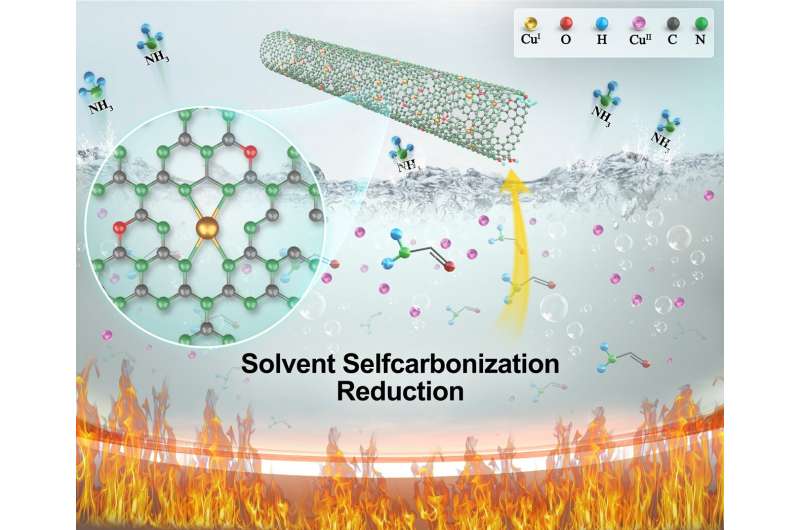by Zhao Weiwei, Hefei Institutes of Physical Science, Chinese Academy of Sciences

A research group led by Prof. Wang Hui and Prof. Zhang Xin from the Hefei Institutes of Physical Science of the Chinese Academy of Sciences introduced a new strategy to prepare ultrahigh density copper single-atom enzymes for tumor self-cascade catalytic therapy.
“The powerful enzymes can help to fight tumors,” said Dr. Liu Hongji, a member of the research team.
The study is published in Chemical Engineering Journal.
The low-valence Cu single atom enzymes (CuⅠ SAEs) contribute to alleviating the inefficient generation of ·OH dilemma in the tumor microenvironment, especially in the presence of overexpressed glutathione (GSH). However, the conveniently controlled synthesis of CuⅠ SAEs with high atom density remains a challenging task due to the cumbersome process, compositional heterogeneity, poor water solubility, and uncontrollable metal valence.
To solve this dilemma, the researchers proposed a well-controlled one-step solvent self-carbonization-reduction strategy to fabricate CuⅠ SAEs with ultrahigh atomic density. Formamide can easily be condensed into a linear macromolecular chain for chelating CuⅡ because of its high N content and vacant ligand sites. The resultant carbon nitride-based fragments reduce CuⅡ to CuⅠ.
“The obtained CuⅠ SAEs has an incredibly high density of 23.36 wt. %, surpassing previously reported metal- or carbon-based supported Cu single-atom catalysts,” explained Liu.
This comes from the well-defined CuⅠ species, whereas aberration-corrected scanning transmission electron microscopy and the X-ray absorption fine structure spectroscopy corroborate the CuⅠ species existed in the form of single atoms.
“The CuⅠ SAEs showed remarkable self-cascade catalytic activities, leading to a tumor inhibition rate up to 89.17 %,” he added.
This study provides a novel strategy for fabricating valence-controlled SAEs supported on C3N4 for catalytic applications, according to the team.
More information:
Hongji Liu et al, Ultrahigh density copper (Ⅰ) single atom enzymes for tumor self-cascade catalytic therapy, Chemical Engineering Journal (2023). DOI: 10.1016/j.cej.2023.148273
Provided by
Hefei Institutes of Physical Science, Chinese Academy of Sciences
Citation:
Novel strategy for ultrahigh density copper single atom enzymes developed for tumor therapies (2024, January 19)
retrieved 19 January 2024
from https://phys.org/news/2024-01-strategy-ultrahigh-density-copper-atom.html
This document is subject to copyright. Apart from any fair dealing for the purpose of private study or research, no
part may be reproduced without the written permission. The content is provided for information purposes only.

